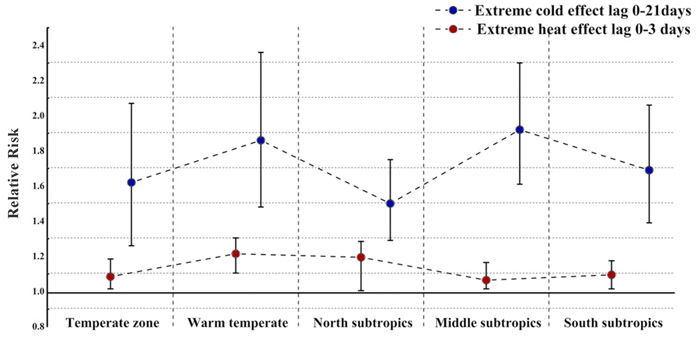| Follow @co2science |
Paper Reviewed
Wang, C., Zhang, Z., Zhou, M., Zhang, L., Yin, P., Ye, W. and Chen, Y. 2017. Nonlinear relationship between extreme temperature and mortality in different temperature zones: A systematic study of 122 communities across the mainland of China. Science of the Total Environment 586: 96-106.
Climate alarmists predict global warming will increase human death rates, and nary a heat wave occurs but what they are quick to blame any concurrent excess deaths on the high temperatures associated with it.
Much more deadly than hot weather, however, is cold weather; yet climate alarmists typically ignore the excess deaths that are caused by low temperatures, even though they are far more numerous than those caused by high temperatures. Indeed, numerous studies detailing this fact -- that extreme cold kills far more persons than extreme heat -- can be found by perusing the many reviews of the topic we have posted in our Subject Index under the subheadings of Health Effects of Temperature: Hot vs Cold Weather. The present review details the latest work to confirm this fact, as reported by Wang et al. (2017) for 122 communities across mainland China.
Using daily non-accidental mortality and meteorological data for the period 1 January 2007 through 31 December 2012, the team of seven Chinese scientists used a quasi-Poisson regression with a distributed lag nonlinear model to estimate the relationship between daily mean temperature and mortality in each of the communities they studied. Next, they pooled their data into one of five temperature zones from which they analyzed the temperature-mortality relationship at the regional and national level.
In discussing their findings, Wang et al. report that both high and low temperatures increase the risk of mortality, but that the risk is higher and lasts longer at the cold edge of the temperature spectrum (see Figure 1). Qualitatively, the relative risk of mortality due to cold was 1.63 versus 1.15 for heat.

Figure 1. Temperature-mortality curves pooled from stations located within the five temperature zones studied by Wang et al.
An analysis of the minimum-mortality temperature (the point on the line in each of the plots in Figure 1 where the relative risk equals 1.0) also proved insightful. All of the regions except the north subtropics experienced a minimum-mortality temperature around the 75th percentile of local ambient temperature, suggesting that inhabitants in these regions are more accustomed (or adapted) to temperatures at the warmer end of the temperature spectrum in which they reside.
To further illustrate the far greater danger of extreme cold, the average relative risk of mortality due to extreme cold and heat for each of the five temperature regions are presented in Figure 2. As shown there, the relative risk due to cold is consistently larger than that due to heat.
In light of all the information presented, it would appear that a little global warming would prove to be a net benefit on human health.

Figure 2. Pooled mortality risks of extreme cold (lag of 0-21 days) and heat (lag of 0-3 days) for the five temperature zones. Source: Wang et al. (2017).




